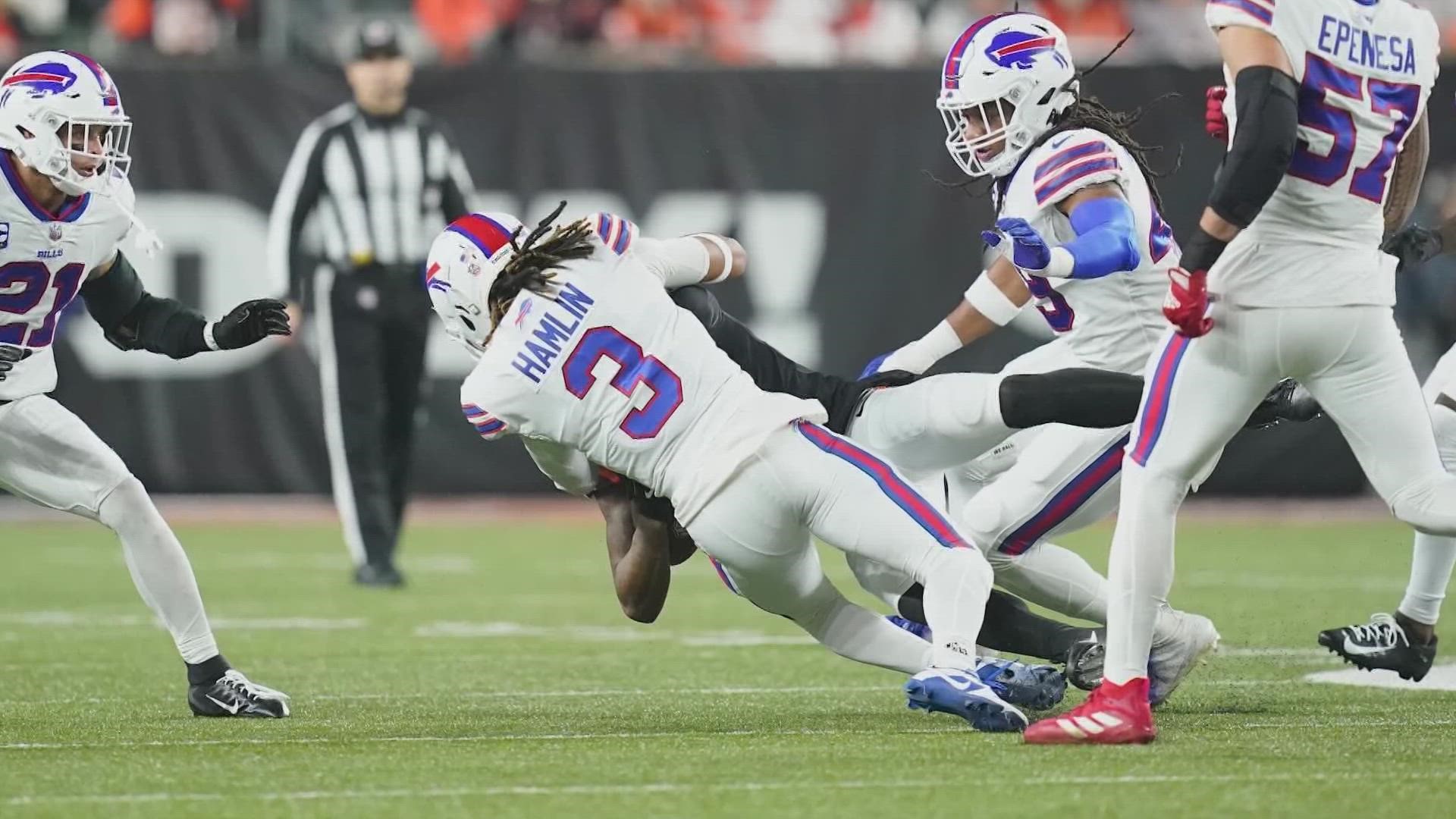DALLAS — On Monday night, millions of Americans watched as medical crews and athletic trainers tried to revive Buffalo Bills safety Damar Hamlin following a tackle.
Here in North Texas, doctors Molly Szerlip at Baylor Scott & White and Mark Link at UT Southwestern Medical Center almost immediately had an idea of what may have happened.
“That was the first thing I thought about, that, 'oh my gosh, he just had sudden cardiac death,'” Szerlip said.
“A minute later, people started calling me,” Link said. “It certainly had all of the features of a commotio cordis event. It fit it perfectly.”
Hamlin’s diagnosis hasn’t been released and he remains in critical condition at University of Cincinnati Medical Center.
Commotio cordis is one type of sudden cardiac death. It occurs when a sudden impact to the heart stops it, and it’s extremely rare partly because it has to strike at an exact moment in the heart’s rhythm.
“It has to be directly over the heart,” Link said. “It can’t even be a centimeter or two away.”
Link serves as a professor of internal medicine and director of cardiac electrophysiology at UT Southwestern Medical Center. For decades, he’s researched and written more than 20 papers on commotio cordis and said it’s certainly underreported but happens just 15-20 times a year in the U.S., with an average age of 15, usually in baseball or lacrosse but sometimes after tackles in football. Hamlin is 23 years old.
“It’s just extremely rare in individuals over the age of 20,” Link said. “It’s definitely happened in high school football.”
“It’s not associated with any kind of heart disease,” Szerlip, a cardiologist at Baylor Scott & White’s Heart Hospital said. “It can happen to anyone really.”
On Monday night, Hamlin was making a tackle on Bengals wide receiver Tee Higgins and raising his arms would’ve lifted his shoulder pads and exposed his chest.
“When he collapses, he’s unconscious before he hits the ground and that’s a typical commotio cordis event,” Link said. “You get hit, you four or five seconds of consciousness because your brain can tolerate four or five seconds of no blood flow and then you go out like a rock.”
Critical to survival is a defibrillator.
“Everyone should know how to do CPR because that’s probably the most important step because CPR continues the blood flow to the brain while you’re getting a defibrillator there,” Link said.
After five minutes without oxygen, the brain would start to die, making immediate care crucial. On the field, trainers and medical staff were seen performing CPR for close to nine minutes before Hamlin was taken away in an ambulance.
“It was very fortunate that there’s a lot of information now to have defibrillators out at the field, to have people who are experienced in CPR in all sports events,” Szerlip said.
In a statement, the Buffalo Bills have shared only that Hamlin spent the night in an intensive care unit and that he is sedated and in critical condition. Commotio cordis is usually diagnosed only after other possibly causes are ruled out.
“When something like this happens, the patient will then undergo a lot of tests to make sure there’s no structural abnormality in the heart or anything else that can cause something like this,” Szerlip said.
It’s also not to be confused with a heart attack.
“Sudden cardiac death is an electrical problem,” Link said. “Whereas a myocardial infarction is a plumbing problem.”
Treatment includes cooling the person to prevent brain damage. If Hamlin suffered a commotio cordis event, he could still make a full recovery and play again.
“It’s all going to depend on the brain. His heart’s going to be fine. His body’s going to be fine. His muscles are going to be fine,” Link said. “That’s all going to be fine. There’s nothing there that’s long lasting. The critical feature what’s his brain going to be like and if his brain is recovered, sure, he can go back to sports.”
Link and Szerlip point out the event is so uncommon, a person is much more likely to die in a crash on the way to a sporting event than from commotio cordis.
“This is a rare event,” Szerlip said. “It shouldn’t keep people from playing sports because it can even happen not playing sports.”

